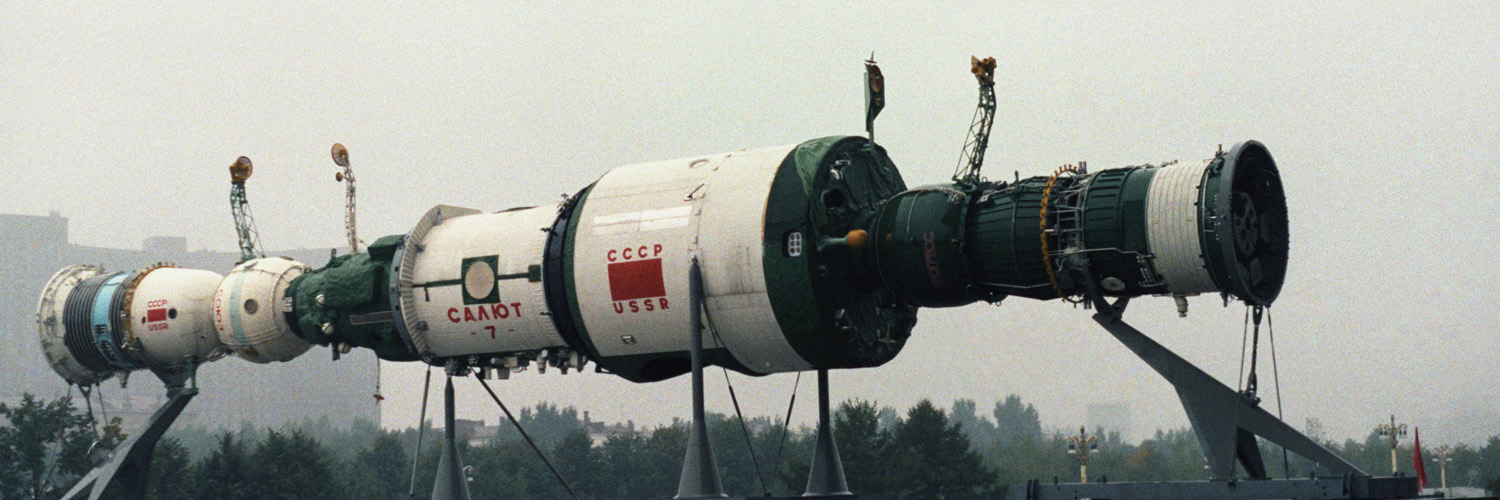
Phyton (occasionally called Fiton) was designed to support seed-to-seed experiments, with the intention of demonstrating that plants can reproduce normally in space. Phyton was successful: it produced the first space-grown seeds, achieving what we call ontogenesis (seed-to-seed growth) with Arabidopsis. It grew plants inside glass cylinders with nutrient agar, had a powerful lamp, and used an air filter to remove air contaminants. It even included an automatic apparatus that could plant seeds in orbit! Python was also highly adaptable: scientists could adjust individual cylinders, so they could test different light treatments, water quantities, plant species, and nutrient solutions. Phyton was developed by the Ukrainian Institute of Molecular Biology, and ran flight experiments on Salyut 6 and Salyut 7. There were three iterations of Phyton, listed below.
Phyton-1 housed a germination experiment, where cosmonauts attempted to grow onions, carrots, cucumbers, tomatoes, garlic, and some other plants from seed. The results were quite different from what scientists expected! The Arabidopsis grew so fast that it choked on its own waste products before successfully reproducing. The onion seed stalks also grew much more quickly than they do on Earth. On the other hand, the wheat reproduced much more slowly, and its grain didn’t ripen in time before the experiment returned to Earth. Phyton-1 also tested fungi, to see how they responded when they couldn’t sense gravity. The fungal fruiting bodies grew toward the light, but without light they grew in many directions.
Phyton-2 had three light sources and an ion-exchange nutrient agar. Cosmonauts found that the shoots developed better if the Phyton-2 was moved to face the sunlight through a porthole. The plants were well-ventilated and watered by an automatic sequencer, but the peas and wheat still died at an early developmental stage.
Phyton-3 supported the first Arabidopsis that flowered in space (1980), a major step toward seed-to-seed plant development. In a historic 1982 Salyut-7 experiment, Arabidopsis finally produced seed pods which ripened and burst (just like they would on Earth). Out of about 200 seeds, half of them were immature and 42% germinated to produce normal plants. This demonstration was a landmark achievement in astrobotany.
An excerpt from Humans in Spaceflight:
“Fiton-3 had transparent walls and contained growth vessels filled with an agar-nutrient medium, a unit for sowing seeds in microgravity, a ventilation system that maintained sterile conditions inside the container, and a daylight-type fluorescent light.”
– Humans in Spaceflight, pg. 52
References:
- Review and analysis of plant growth chambers and greenhouse modules for space (link)
- Spaceflight hardware for conducting plant growth experiments in space: The early years 1960–2000 (link)
- Greenhouse design integration benefits for extended spaceflight (link)
- Review and analysis of over 40 years of space plant growth systems (link)
- The Story of Space Station Mir (link)
- Chapter 5 Growing Crops for Space Explorers on the Moon, Mars, or in Space (link)
- Humans in Spaceflight
